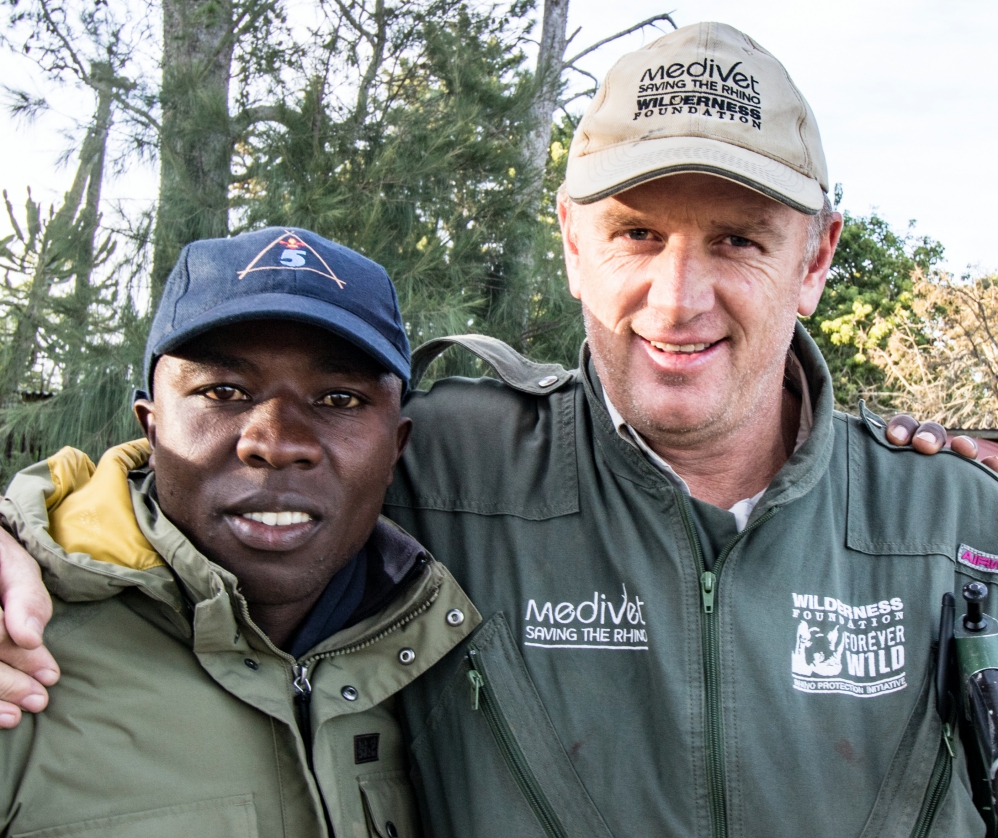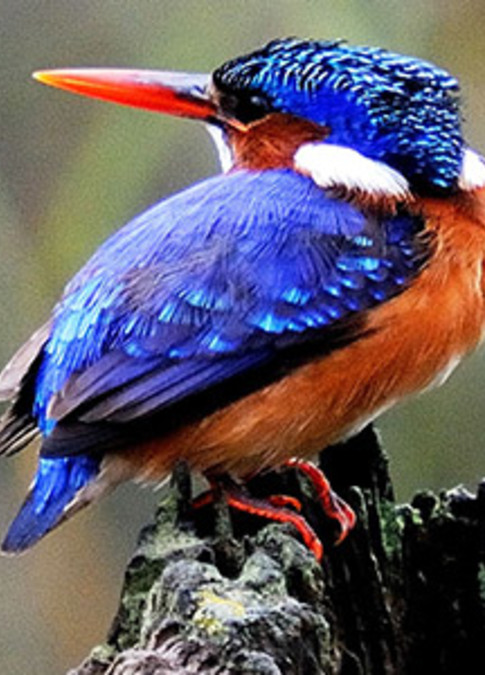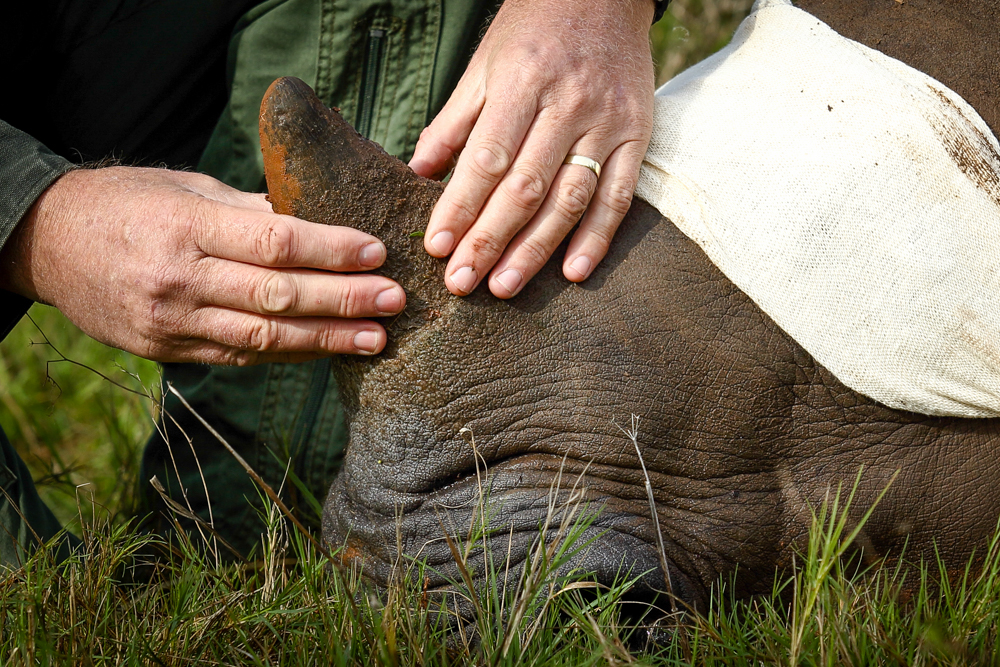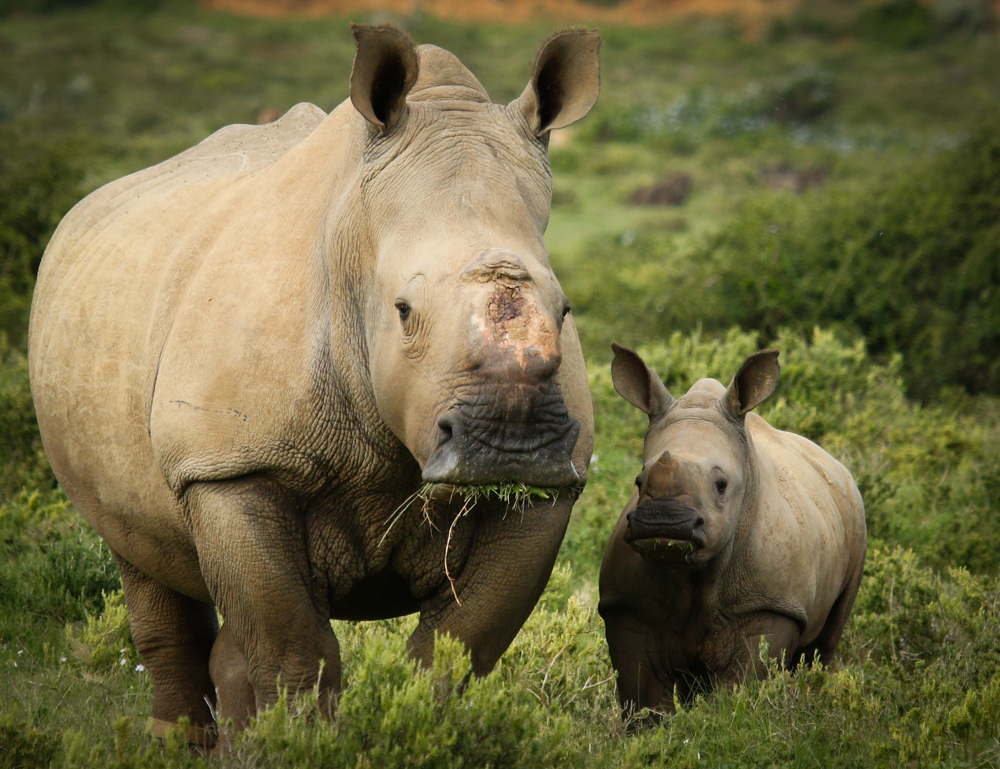Poachers Killed: Eastern Cape Rhino Poaching Crisis
On 2 May 2012 a horrific act of cruelty took place at Kariega Game Reserve in the Eastern Cape. The gruesome scene of three white rhinos with their horns hacked off lying in pools of their own blood is etched in our memories forever.
The Eastern Cape rhino poaching crisis has not abated. All anti-poaching teams in our area remain on high alert after another week of intense activity by rhino poachers. Humans remains, a high powered rifle, gloves, wire cutters and the remains of a back pack were found on Tuesday 3 July at our neighbours Sibuya Game Reserve. It seems that poachers walked into a pride of lions and some, if not all were killed.
Nine rhinos have been killed by poachers in our Eastern Cape province this year alone. This is the first incident in our area where poachers have been killed.
Rhino Poaching Crisis Continues
The poaching of rhinos is an ongoing crisis. Eastern Cape game reserves, and parks across South Africa, have implemented a variety of tactics to try to protect each and every rhino against poaching attacks. Poachers are ruthless in their killing of rhinos and other wildlife. It seems that the lions at Sibuya got their own back in the latest attempted poaching.
The poaching crisis is driven by the demand for rhino horn by people in China, Vietnam and elsewhere. Rhino horn is erroneously believed to be an aphrodisiac and have medicinal qualities.
Dehorning as an Anti-Poaching Management Tool
At Kariega we have taken the management approach to dehorn all our rhinos to try and keep them safe. If the rhino has only a small piece of horn, it will hopefully reduce the risk of poaching. The dehorning procedure has to be done regularly as the horns continues to grow. The procedure is quick and painless for the rhino as there is no contact with the growth plate or nerves underneath the horn.
Thembi, the first calf of poaching survivor Thandi, was dehorned again recently. We were honoured to have two very passionate wildlife heroes with us during the procedure, Dr. William Fowlds and James Mwenda. Dr. Fowlds has been instrumental in the treatment and care of Thandi since the poaching in 2012. He has also helped spread the awareness about the rhino poaching crisis all over the world. James Mwenda was a guest from Kenya's Ol Pejeta Conservancy. James worked with Sudan, the last male northern white rhino, until he died in March 2018. James has seen extinction of a sub-species of rhino with his own eyes. Read more about James's visit to Kariega.
The care that these two gentleman showed during the dehorning of Thembi was incredible to witness and provided encouragement in the fight against rhino poaching for everyone involved. If we all work together, we can do so much more for the conservation of our vulnerable wildlife species.

Rhino and Rhino Poaching Facts
- There are five species of rhino – white rhino, black rhino, Javan, Sumatran and Indian. All of them being classified as near-threatened to critically endangered.
- The last male northern white rhino, a sub-species of white rhino, died in March 2018. He was called Sudan and lived on Ol Pejeta Conservancy in Kenya.
- There are less than 20,000 white rhino left, All live in protected areas and private game reserves.
- There are less than 5,000 black rhino remaining. This species is critically endangered.
- There are only 67 Javan rhinos left in the wild. They all live in two national parks in Java, Indonesia.
- Since 2007 more than 7,400 rhinos have been poached in South Africa. This number is completely unsustainable as we are losing more rhinos through deaths than we are gaining through births.
- In Asia, rhino horn is incorrectly believed to have healing properties for anything from headaches to cancer.
- Rhino horn is sold for $100,000 per kilogram, which is more than gold. This is absurd as rhino horn is made out of keratin, the same substance as our hair and fingernails.
- The passionate, hard-working anti-poaching teams try their best to keep the rhino populations safe, but they are only as strong as their equipment, training and manpower.
Get Involved to Protect Eastern Cape Rhino
Watch our many rhino related videos on our Kariega Game Reserve YouTube channel and read our blogs to find out more about the rhino poaching crisis and get in touch if you would like to get involved. Add your comments below or email jone@kariega.co.za.
Please follow the link to our Save the Rhino page to see how you could support this initiative to keep our rhinos as safe as possible.












